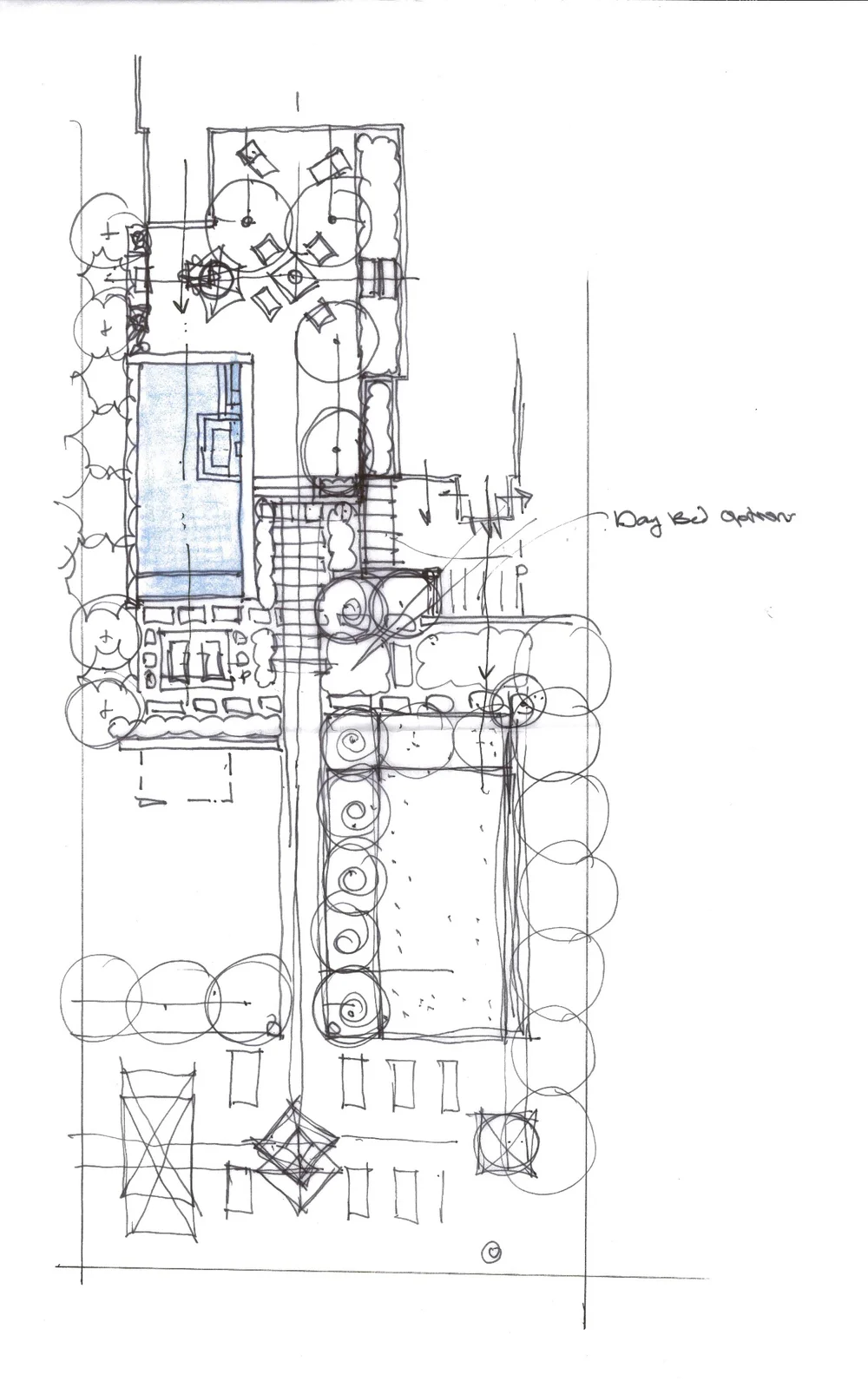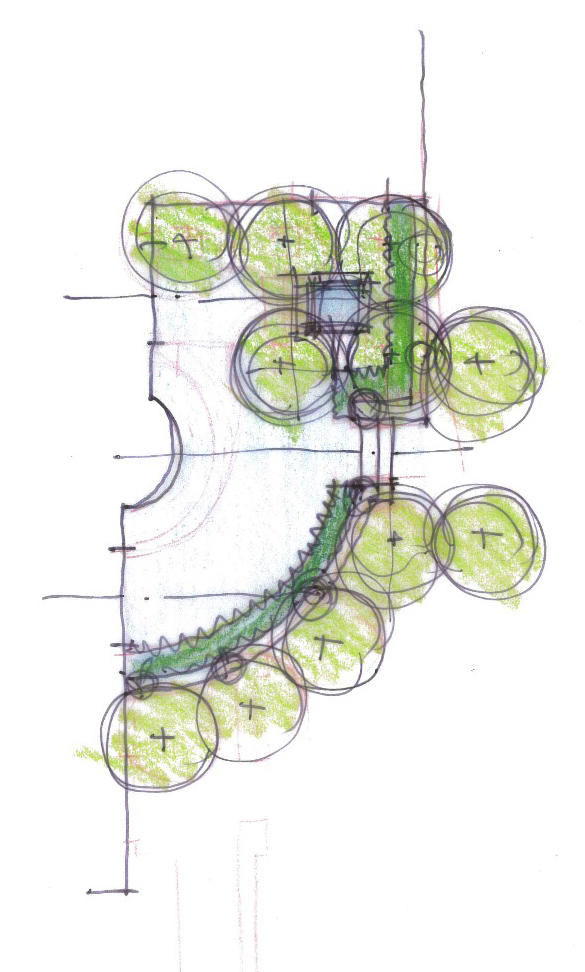Garden Geometries: Centering and Site Lines
By Vera Gates
The hardest part about designing a garden is knowing how and where to begin. The first steps for us are picking up a pencil and sketching on trace (tracing paper). All our design evolves from here.
We begin by generating a series of organizing site lines — sort of thought lines. These lines are gestural, and both straight and curving. They help us organize our thoughts and start drawing in a meaningful way.
These lines emerge from the site itself, for example: a curving ring of trees, a native creek or the angle of natural topography.
We also generate organizing lines out from the buildings and consider lines of sight, as well as circulation and connection from doors and points of entry.
These gestural line drawings are a starting place but not necessarily the ending place. It is a means of strategically plotting a series of ideas and exploring how those ideas might work. These studies get us loosened up and ready to dig into the design possibilities.
Once we have our bearings, we then start to look at the overall geometric form and whether we are going to do something highly symmetrical, crazy abstract or somewhere in between.
No matter the design intention or direction, from traditional to contemporary, design begins with drawing lines and organizing space with these lines.
Some of our gardens are symmetrical, at least in part. More often, we design asymmetrically, with a balance of features and elements, evolving along a series of site lines. The overall design is an orchestrated blend of ordering systems.





